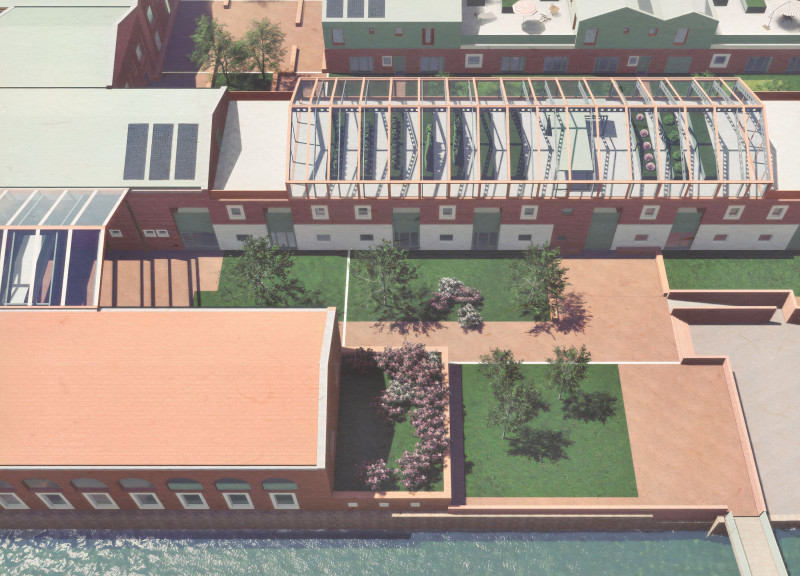5 key facts about this project
From the outset, the project represents a seamless integration of innovative design principles with established architectural traditions. It aims to foster interaction and engagement among users, promoting a sense of community and belonging. The building serves various functions, accommodating spaces for gathering, learning, and creativity. This versatility makes it a valuable asset to the neighborhood, meeting diverse needs and adapting to the dynamic lifestyle of its users.
Key design elements of the project stand out in its layout and flow. The arrangement of spaces has been carefully considered to enhance usability while promoting movement throughout the structure. Open-plan areas create a sense of transparency and connectivity, allowing natural light to permeate the interior and fostering an inviting atmosphere. The careful placement of windows and strategic use of skylights further enrich the internal environment by optimizing daylight, enhancing energy efficiency, and creating a vibrant ambiance.
The facade of the building is noteworthy, characterized by its materiality and texture. A combination of sustainable materials, including recycled metal, local stone, and glass, contributes to both the aesthetic and ecological footprint of the design. The thoughtful selection of these materials not only enhances durability and maintenance but also reflects the local architectural vernacular, creating a dialogue between the new and the existing structures in the area. The exterior's dynamic nature is underscored by varied geometric forms, which create a visually engaging silhouette against the skyline, while the thoughtful use of vegetation softens the overall appearance, blurring the lines between built form and natural landscape.
Moreover, the project incorporates innovative sustainability strategies that underscore its commitment to environmental stewardship. Features such as green roofs, rainwater harvesting systems, and energy-efficient mechanical systems have been integrated into the design to minimize the building’s carbon footprint. Such elements reinforce the project’s role in educating users about sustainable practices, proving that architecture can effectively contribute to ecological awareness while maintaining functional integrity.
The interior spaces of the project are equally notable, designed to promote comfort, creativity, and collaboration. The choice of materials continues within, where the use of wood and soft finishes creates a warm and inviting environment. Flexible spaces are configured to support various activities, from formal gatherings to casual meetups, thus fostering an adaptable atmosphere. The layout encourages social interaction while providing areas for quiet reflection.
Unique design approaches employed throughout the project focus on inclusivity and accessibility. By ensuring that all areas are accessible to individuals of varying abilities, the design exemplifies a commitment to social equity. Careful consideration of sightlines and spatial relationships contributes not only to physical access but also to a sense of visual and emotional connection among users.
As a culmination of these thoughtful architectural decisions, the project stands as a model for contemporary design that balances aesthetics, functionality, and sustainability. It challenges conventional notions of space while remaining deeply rooted in its context, fostering community engagement and ecological mindfulness. By exploring the architectural plans, sections, and overall design, readers can gain deeper insights into the innovative ideas that shaped this impressive project. This inquiry not only enriches the understanding of the architectural landscape but also highlights the enduring impact that well-conceived design can have on communities and individuals alike.


























